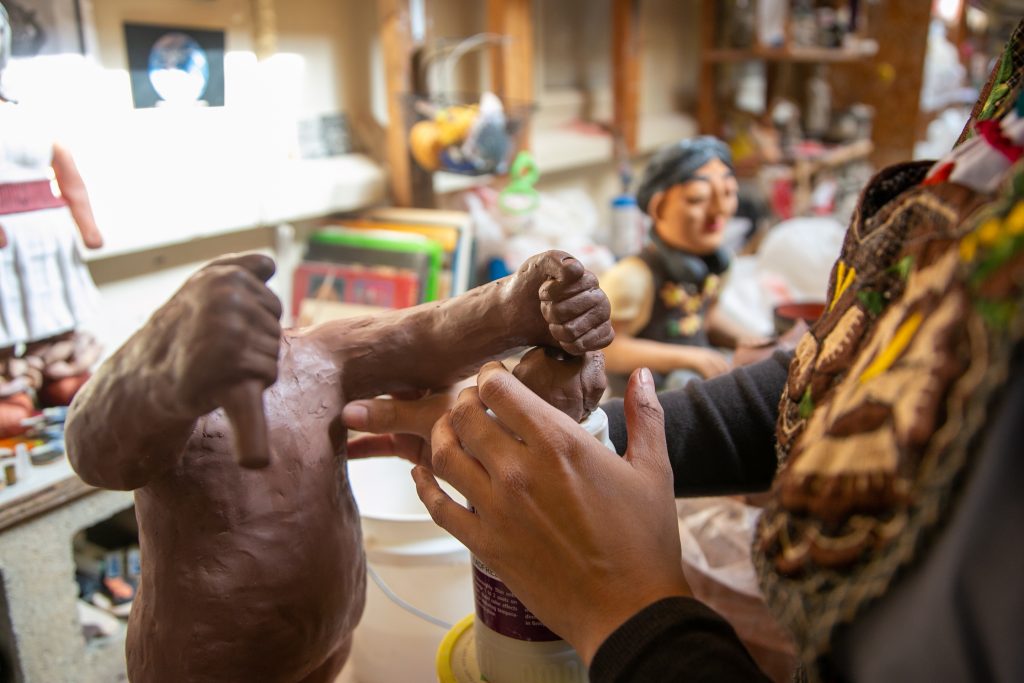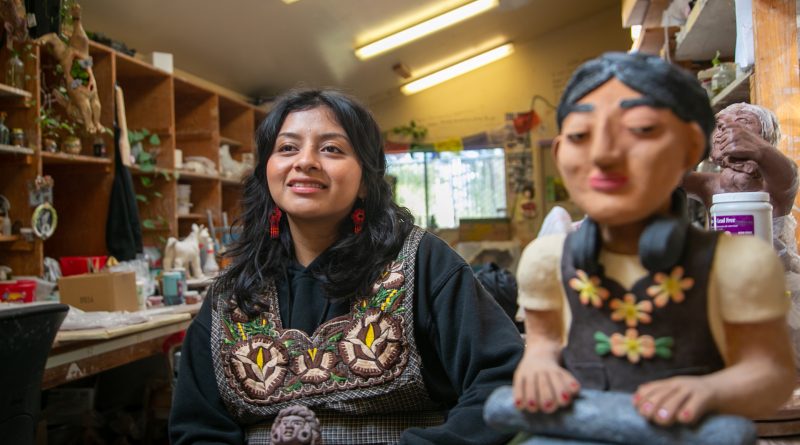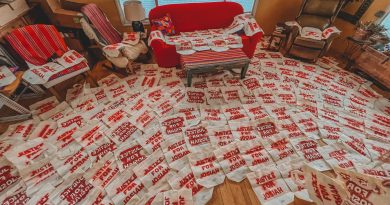Soy Artista: Reconnecting through ceramics
The smell of tierra mojada and paint fill her work space. Her hands are covered in gray clay. Karina Juarez, student at Cal Poly Humboldt and a ceramist, molds a variety of figures and shapes that express her experience as an Indigenous woman.
She took a ceramics class at her community college and her passion for pottery grew quickly.
“I basically got addicted to the clay,” Juarez said. “It was just love at first touch, I felt connected to it.”
Juarez explains how her father at a young age was said to have been creative and would find pieces of clay where he lived and would mold them into toys to play with. She now creates cups, pots, mugs and figures inspired by the Zapotec culture that is connected to her family’s history.
“I’m representing a really large group of people. We’re still here, we’re still alive, we’re still making art,” Juarez said. “I have to make this art because I want to see it exist. This is art that our ancestors used to make.”
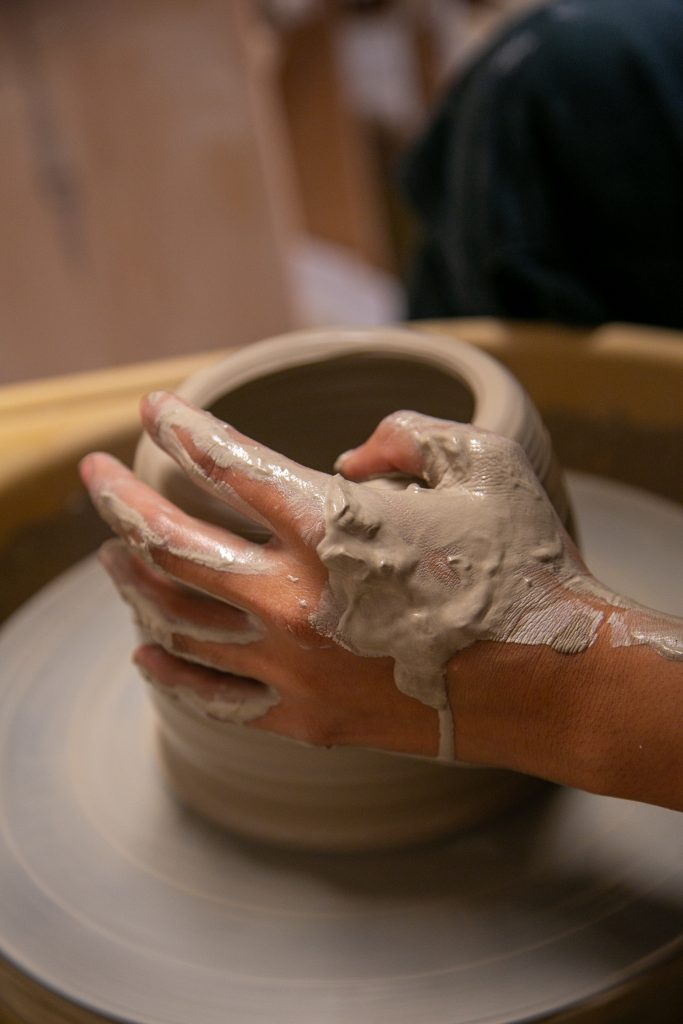
The Zapotec are an Indigenous group from Oaxaca, Mexico that Juarez said are famous for their food and art, specifically for their ceramics.
Juarez is a transfer student and a senior double majoring in art education and fine arts. She moved here from Orange County in 2021, eager to demonstrate her creativity. But Juarez, being Zapoteca, has experienced imposter syndrome and how isolating these spaces can be for women of color especially here at Humboldt.
“A lot of us aren’t supported in the arts. It’s like, why are you majoring in art,” Juarez said. “I just feel like there is an underrepresentation of our culture in the ceramics world in general but thankfully that’s changing now.”
One of Juarez’s art pieces named “Mi Existencia es Mi Resistencia” is inspired by a stone figure she found in Oaxaca that depicts a medicine woman at work.
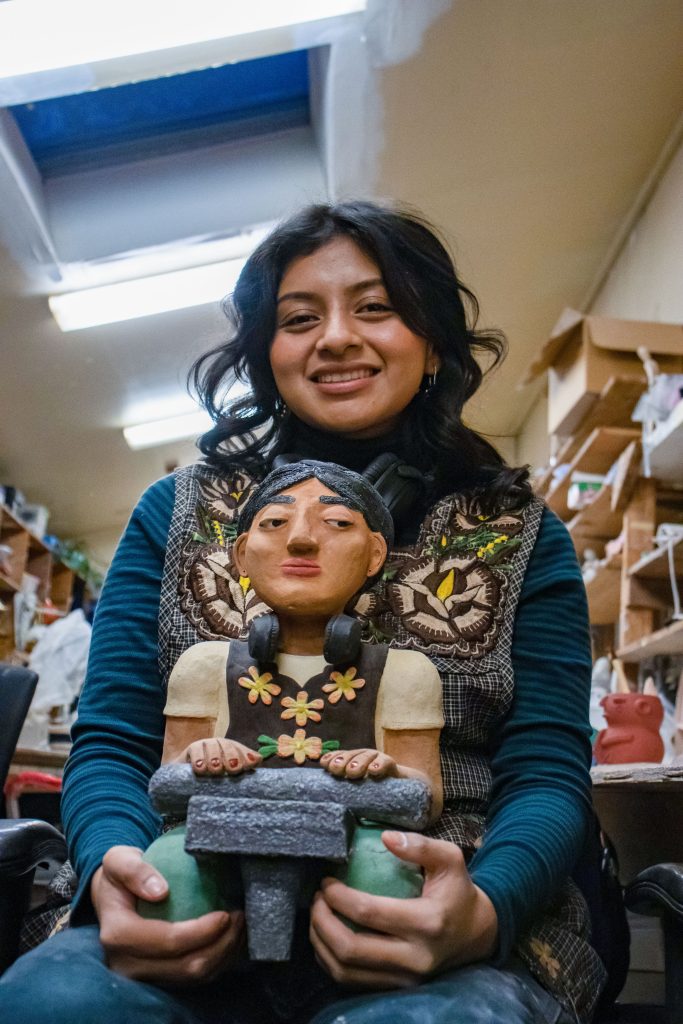
“It’s not like a skinny little girl, you know, it’s a strong looking woman. So I I decided to make my own version of it. I wanted to really tap into the Mexican American experience,” Juarez said. “There’s a lot of messed up values in our culture like machismo and misogyny and I’ve seen it all, especially going back home. I wanted to dedicate this piece to all the women that are having to grow up in this world.”
Juarez plans to apply to artist residency programs and continue her education with a masters in ceramics with ambitions to teach at the college level one day.
CPH Art Education Professor James Woglom is a huge supporter of her work because of its incorporation of socially engaged art practices. He believes Juarez thinks through her artform as a representation of her place in history.
“She’s making art that illustrates her own autobiographical story,” Woglom said.
Juarez advocates for reconnection and education. She believes there is a lack of diversity in art and it can be unmotivating especially when multiple identities and labels alienate artists interested in their roots.
“Sometimes you don’t feel like you can. It feels a little scary, especially because there’s things that were burned and destroyed, so we don’t even know what the meaning of them are,” Juarez said. “I would definitely encourage students to tap into that and figure out why you’re being called to work with or be inspired by ancestral work.”
